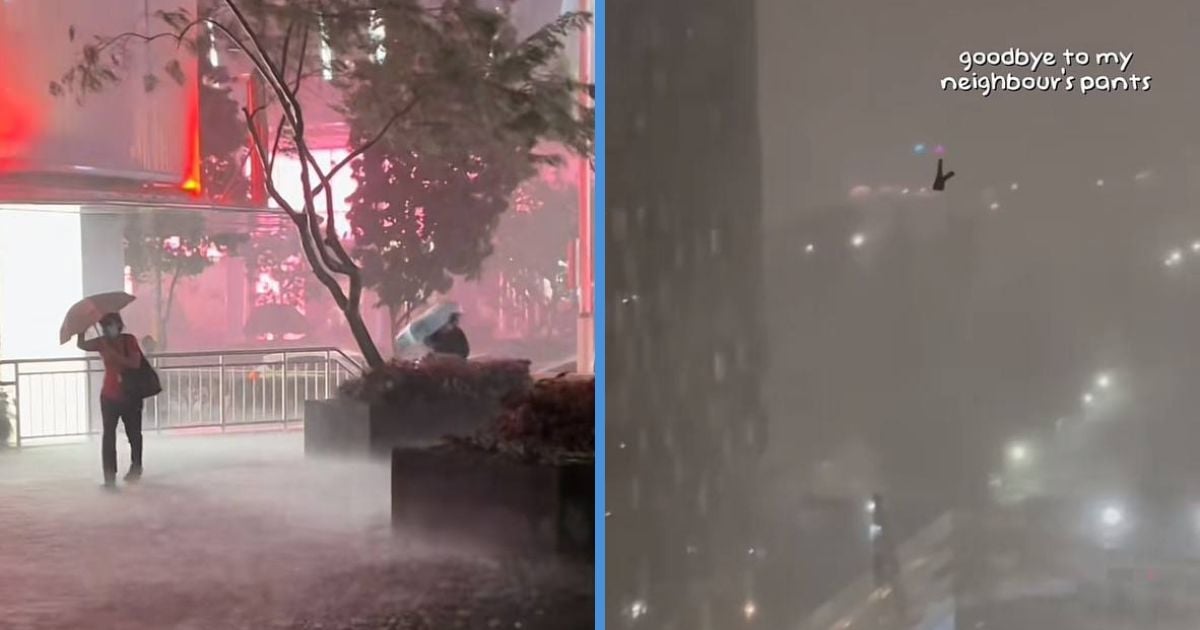A brief but massive thunderstorm occurred on Tuesday (17 September) evening from around 7pm to 8.30pm and no part of Singapore was spared, with videos of trees being uprooted circulating online, glass panels shattering and metal pieces falling on passing vehicles, and even a random pair of trousers flying in the wind.
According to the National Environment Agency’s (NEA) Meteorological Service Singapore (MSS), maximum wind gusts ranged from around 40kmh to around 80kmh.
The record high in Singapore was set in 1984 when Tengah registered a wind gust at 144.4kmh, and in 2018, a wind speed of 133.3kmh was recorded at the same area.
Interviews conducted by CNA revealed that such conditions are typically associated with typhoon-like severity, and that NParks was alerted to numerous tree incidents on Tuesday evening, following which its staff and contractors worked through the night to clear the obstructions and remaining debris.
In a statement on 18 September, the MSS confirmed that the storm was caused by a Sumatra squall.
So…
What in The World is a Sumatra Squall?
To break it down for those of us who didn’t do well in Geography class, a squall isn’t a character in Final Fantasy VIII, but a sudden burst of strong winds usually accompanied by heavy rain.
As for the word “Sumatra”, well, it’s because the squall forms over the Indonesian island of Sumatra.
This phenomenon occurs during the southwest monsoon and inter-monsoon periods between April and November, when winds usually come from the southwest.
These gusts of wind travel across the mountain range of Sumatra, causing an unstable atmosphere. As a result, thunderclouds and linear-shaped convection systems form and are propagated towards Singapore and the Malay Peninsula.
Something like that.
In general, squalls occur in the pre-dawn hours or early morning. Although they affect a much larger area along their path compared to conventional storms, squalls tend to pass quickly because of their narrow width.
On average, squalls occur five to 10 times per month from April to November, and according to MSS, Singapore experiences an average of 45 squalls in a year.
According to NEA, more thundery showers can be expected towards the last week of September as we are still in the southwest monsoon season. Before you start complaining, this also means that temperatures are expected to go as low as 23 degrees Celsius.
Just don’t bring out your winter wear please.
Over in TikTok, there’s a drama involving property agents that’s caused by us. Here’s what happened:


Read Also:
Advertisements

